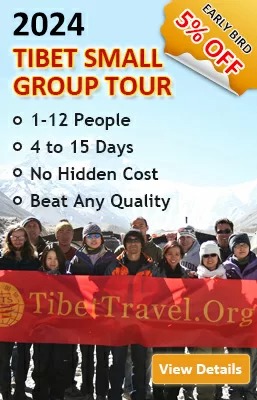
Nagqu Horse Racing Festival: Tibet's Grand Nomadic Celebration
Rooted in Tibetan traditions dating back centuries, the Nagqu Horse Racing Festival is a vibrant showcase of nomadic life and equestrian skills. Held annually from August 1st, it lasts 5 to 15 days, with events spread across Nagqu's vast grasslands. Nagqu, situated at an altitude of over 4,500 meters, serves as the main venue. This festival commemorates Tibetan ancestors' horse domestication and herding practices, blending sport, spirituality, and community, which is a highlight for both locals and international visitors.
Core Activities of the Nagqu Horse Racing Festival
The Thrilling Horse Races
Horse racing is the heart of the festival, and it's unlike any race you've seen. Many riders are young boys and girls, trained from childhood by their nomadic families—their skill and courage are truly breathtaking. Races cover distances of 3 to 5 kilometers across the open grassland, with riders galloping at full speed, their colorful Tibetan robes flowing in the wind. The rules are simple: the first rider to cross the finish line wins.

Festive Celebrations & Rituals
Beyond the races, the festival is filled with cultural delights. You'll see traditional Tibetan song and dance performances: men and women in elaborate, hand-woven Tibetan costumes dance the "Guozhuang" (a circular folk dance) to the beat of drums and flutes. There are also handicraft displays where local artisans sell hand-made items like wool carpets, leather bags, and silver accessories—perfect souvenirs that support nomadic communities.
Before the races, there's a small religious ritual: local monks chant prayers to bless the riders, horses, and the festival. This blend of excitement and spirituality makes the event feel deeply meaningful, not just entertaining.
Explore Nagqu's Surroundings: Must-Visit Spots
While the festival is the main draw, Nagqu's surroundings are worth exploring to make the most of your trip.
Namtso Lake: Just a 2-hour drive from Nagqu, Namtso (Tibet's "Heavenly Lake") is one of the highest saltwater lakes in the world. Its turquoise waters reflect the snow-capped Nyenchen Tanglha Mountains—ideal for photos and quiet moments. Visit before or after the festival to avoid crowds.
Changtang Grassland: The festival is held right on this vast grassland, but take a day to hike or drive through it. You'll spot yaks, sheep, and nomadic tents, and maybe even meet local families who'll invite you for a cup of butter tea. It's a chance to experience nomadic life up close.

What to Eat at the Nagqu Horse Racing Festival
Tibetan food at the festival is hearty, flavorful, and perfect for the high-altitude climate:
Handheld Lamb: Tender, boiled lamb served with a sprinkle of salt or chili powder. It's juicy and has no strong mutton taste—even if you're not a big lamb fan, give it a try!
Tibetan Noodles: Thick noodles in a rich broth, topped with sliced yak meat. Add a splash of vinegar for extra flavor—it's warm and comforting after a day on the grassland.
Sweet Tea: Another must-try! It's made with black tea, milk, and sugar, tasting similar to creamy milk tea. It's not only delicious but also helps ease altitude discomfort and keep you hydrated. Head to a local teahouse in Nagqu City for the best sweet tea.

Conclusion
Last but not least, don't forget to bring your camera: this is a photography tour dream, with endless opportunities to capture riders in action, colorful costumes, and stunning landscape shots.





35 Comment ON "Nagqu Horse Racing Festival: Tibet's Grand Nomadic Celebration"
Asked by Liliana Me** from Macau
plan a 7-8days trip for me and my boyfriend in April
Hi! I would like to plan a 7-8days trip for me and my boyfriend in April (3rd to 10th ideally) to Nepal, Tibet, and, if possible, Bhutan. Do you think it would be doable? Based on what I read, there are some places/things to do to consider: Nepal: Everest Base Camp trek and the Annapurna Circuit, ancient temples, sacred sites like Lumbini, Kathmandu, Tibet: The Potala Palace in Lhasa and the Jokhang Temple. eventually the holy Mount Kailash or the high-altitude plains. Bhutan: Thimphu, Paro, and the famous Tiger’s Nest Monastery. To take part in cultural traditions, yoga, meditation... Of course I am open to any recommendations you could make. For your reference, we are both based in Asia: him, in Bangkok and myself in Macau. Thank you so much for the information you could provide and, if possible, an estimated budget for your offer.
Asked by Ke** from Singapore
Cycling Tour to Mt Kailash
Hi , we are planning a Cycling Trip once Tibet opens for Tourism. The plan is we shall arrive to Kathmandu , travel to the border and enter via Kerung. Can you pls send a day to day Itinerary starting from Kerung - Lake Manasarovar - Darchen - Asthapath. We shall go around Kailash on foot and resume Cycling back to Kerung. We are a Group of 6-8 persons. Thanks Pls send ur reply to Kevin
Asked by Debo** from USA
Please can you tell me the prices and dates for the Tibet Luxury Tour.
Also, could you please provide a detailed itinerary - I want to see how many hours are spent on buses/vehicles. Thank you! Deborah
Asked by S** from HongKong
Tibet Tour from HK
May I know if holding Mainland Travel Permit for HK Residents. is it also need to get the visa permit to Tibet and what is the procedure if need to apply? Thank you
Asked by Na** from USA
Is Kailash Mansarovar Trip open for Indian Passport Holder?
Is it open for Indian Passport Holder?
Asked by A** from Singapore
Enquiry on private tour
We are planning a trip from Hong Kong to Tibet during the 12th to 21st of April. We want a private tour that covers all the scenic places as well as the EBC. Please advise an itinerary along with the cost breakdown. Thanks.
Asked by Na** from Canada
We would like to take the train from Xining to Lhasa
Asked by Gr** from Canada
The "Tibet Entry Permit" should be apply
Asked by Tam** from Singapore
Sightseeing Potala Palace
Asked by Ka** from Singapore
plan to travel to Mount Kailash